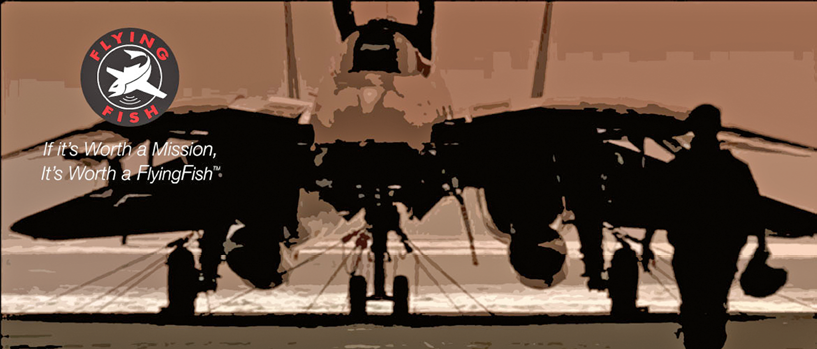When thinking of SIGINT, the USAF RC-135V/W Rivet Joint reconnaissance aircraft program, or its international cousins; primarily, the UK’s Air Seeker program, and for smaller SIGINT aircraft, the USAF MC-12W Project Liberty program based on a KingAir 350ER, all come to mind.

These programs provide state-of-the-art SIGINT capabilities. Unfortunately, for many potential users, their export potential is limited.
Due to worldwide advances in technology, and the relaxation of US export restrictions for some allied countries, a number of countries are now fielding ISR aircraft and UAVs with a SIGINT component that provides robust ISR/SIGINT capabilities.
Every country has different ISR requirements, and in order to conduct such missions with maximum effectiveness, some signals/communications detection and interception (SIGINT) is crucial. Whether it be illegal fishing boats off of the coast of Thailand, refugees (and human traffickers) in the Mediterranean Sea, children being kidnapped by Boko Haram in Nigeria, diamond hunters in Namibia, or lonely Russian soldiers calling home from the Eastern Ukraine, all of these target sets use some form of electronic communication.
Currently, the basic ISR aircraft flown by most countries (C-208s, King Airs, CASA 212s, and DA-42s, etc.) have a simple configuration: an EO/IR sensor, on-board processor with a basic tactical system, AIS for maritime operations, and a simple Line of Sight (LOS) data link. Regrettably, users of these basic ISR aircraft are discovering that without SIGINT, their threat detection capabilities are minimal.
Finding targets/threats with an EO/IR sensor alone is similar to “looking through a drinking straw.” ISR aircraft in this configuration are being tasked more often than not into “Force Protection” missions where they are supporting ground forces whose locations are known as well as the threats.
Sadly, these aircraft are being wasted in roles for which they were not designed. Despite all of their modern technology, they are providing no more support to ground troops than the Luftwaffe’s Fieseler Storch aircraft of the early 1940s.
Clearly, the EO/IR sensors on board these aircraft need cueing to become more effective and actually go out and seek undetected targets/threats. Radar suppliers are more than happy to “solve” this problem by offering either search radars, or small SAR radars.
However, radars are an expensive “partial answer” to this problem. Large search radars generally don’t fit onto small, light, ISR aircraft, and, when installed, they have a major problem: they emit. For maritime operation, radars provide a proven tool to correlate AIS with radar tracks. That’s fine and good until pirates and smugglers, using commercially available radar detectors, turn off the AIS. Today, most flights in the Mediterranean and off the coast of East Africa are passive (with SIGINT) and their expensive, capable radars are turned off.
Today’s target set is like today’s youth; they love to communicate. No pirate ever attacks a ship without a phone call first to a number in London or Geneva asking for data on the vessel’s cargo. When refugees reach a Greek island, the calls invariably go to either human smugglers discussing payment, or ISIS terrorists checking in on their way to Northern Europe. No EO/IR or radar will catch these targets; only SIGINT will.
Those countries who are upgrading their ISR aircraft with SIGINT focus on three target sets: Satellite (Sat) Phones, GSM (active and passive) and PTT radios (VHF/UHF). Combining low-cost, mostly European SIGINT systems with their current ISR fit gives these users highly capable aircraft (and UAVs) which can conduct “real ISR missions” rather than Force Protection.
Outside the US and its close allies, airborne GSM is a fairly new field. GSM has the major limitations that (1) most targets are well aware that GSM calls are monitored/stored in some fashion and “not secure,” and (2) there is a large volume of traffic.
Due to the number of calls picked up, finding a threat/target with a passive system is often difficult. Active systems can be used when a specific target is known but are also emitters. Obviously, GSM is not used at sea. Despite its drawbacks, GSM systems are proving tactically effective over land and are being installed on more and more ISR aircraft.
Direction Finding (DF) and potential interception of PTT radios is becoming more and more prevalent on ISR aircraft;, especially for overland operations. There is a saying in the SIGINT business, “The boss has the Sat Phone, but his guards have PTT.”
Several South and Central American countries have had great success using manned aircraft to track truck drivers traveling to drug pick up locations. The SIGINT pickups from covert bases need to be timed, and the only way they communicate is via PTT radios. Their use is ubiquitous and rapidly spreading. While quite effective, the downside of installing VHF/UHF systems on small manned aircraft is space on that aircraft. To increase the capability (detection), there needs to be wider spacing and more antennas. Unfortunately, this results in increased cost, weight, and complexity.
Airborne Sat Phone monitoring is now a must on all ISR aircraft. Due to the fact that this technology is passive, Sat Phone monitoring is perfect for long range AIS correlation. Also, these phones are the primary terrorist/target tool for long-range communication where there is no GSM infrastructure; for example at sea, or in the desert.

Just as terrorists use “burner” GSM phones, they now use Thuraya “sleeves” in the same manner. The other attraction of Sat Phone communication for terrorist/targets is that mobile satellite communication does not “touch” the local GSM infrastructure; it is completely independent, and unless monitored, completely secure.
At sea, these phones have turned out to be the primary and most useful method of pirate/smuggler communication. However, it’s not only “bad guys” who use these phones. Many human traffickers hand over a Thuraya phone to a ship of refugees, tell them to sail on a bearing, and “to call this number when you see land.”
There are more than a few instances of panicked refugees calling media outlets for help from sinking ships (see: http://www.aljazeera.com/news/2015/05/150505152253352.html). Due to the classification, not much more can be said about this topic, but it is credibly assumed that Sat Phone use (mostly with AIS) has saved more Mediterranean refugees than any other technology. Conversely, it’s a proven “pirate catcher” off of East and West Africa.
Basic ISR aircraft can be much more effective with one or more of the SIGINT systems described above. Visual systems such as EO/IR are simply not enough today. However, used for cueing and coupled together with SIGINT, these aircraft can accomplish the missions for which they were designed. Due to the large stand-off ranges of today’s current EO/IR sensors, a SIGINT target can be located, and imaged 50+ km away from the aircraft with the target remaining completely unaware.
Looking ahead, there are three emerging trends in the “low-end” SIGINT field:
• Data linking of the SIGINT data over long distance BLOS (Beyond Line of Sight) links to command centers for analysis
• Installing the same packages into UAVs with LOS and BLOS data links
• Installing extremely small lightweight SIGINT capability into small UAVs; even those launched by submarines, and ground forces.
While current US systems do the “heavy lifting” in the Western SIGINT world, emerging technology is allowing many smaller countries the opportunity to field effective and sophisticated SIGINT systems to complement their current ISR platforms. In addition, they now have the option of customizing their baseline ISR packages to their own specific and unique requirements.
horizontechnologies.eu
Horizon Technologies is a UK startup, and within three short years, has become a world leader in Airborne Satellite Phone Monitoring. We have offices in the United Kingdom, USA and other parts of Europe, along with a worldwide network of sales representatives. FlyingFish™ has been in production since 2012, is manufactured in the UK, and is available worldwide for customers desiring an affordable, proven, ISR product.


